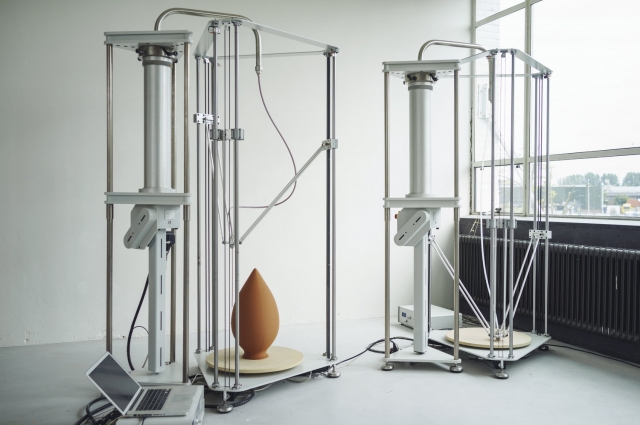Tradition Meets Technology in 3D-Printed Qvevri
QvevriXYZ is a Georgian startup that is applying modern technologies to Georgia’s centuries-old traditions of wine making. The four-person team has created the first ever 3D printed Qvevri.
Their website describes the product, “With elements of traditional Qvevri making process and modern technologies, we improved its structure and quality, yet kept its unique characteristics. The Qvevri [is] a unique Georgian vessel used in winemaking. In spite of 8000 years old history, the way Georgia makes Qvevri has not changed since. Using primitive methods of production, today Qvevri is inaccessible, inconsistent and not of good quality.”
As demand for natural and organic wines increases, winemakers may be drawn back towards qvevris – especially if they can be made inexpensively with consistent quality.
The QvevriXYZ team is composed of David Mizandari, Nika Gujejiani, Creative Director of Bank of Georgia, Giorgi Mamasakhlisi, a photographer, and Oliver van Herpt, a Dutch industrial designer.
The company is quoted in Caucasus Business Week, saying “The clay is not standardized in Georgia, the quality of the Qvevri wine depends on the composition of the clay, it determines firing curve, speed of heating and cooling, etc. We went to Shrosha [a Georgian village known for its clay works] and asked one of the Qvevri builder, how long would he take to make 500 liters Qvevri. He said by the end of August, he had a lot of other orders. They have one building for that, they set the fire and without any control or considering standards, that’s why it’s cracked since the beginning. That causes wine dripping out of the dish.
As usual, making Qvevri by clay takes approximately 1 month, depends on the size. It needs several hours by 3D printer, 1 week of drying and 24 hours of firing in automatized oven – strictly controlling process and temperature. As a result, Qvevri is more solid.
Qvevri should be available for everyone who wants to produce wine that way. Our segment is people who make 500 liters to 1 ton wine a year. We want buying it to be as simple as any product. Besides, we will give instructions to our customers, how to install it correctly.”
3D printed qvevris are currently in a nascent stage of production and are not yet available for purchase.
In 2013, Georgia’s ancient traditional Qvevri wine-making method was inscribed on UNESCO’s List of the Intangible Cultural Heritage of Humanity.
By Samantha Guthrie
Photo: QvevriXYZ











